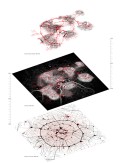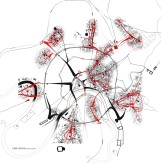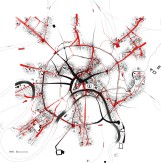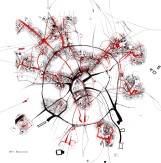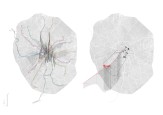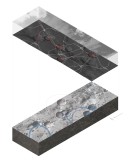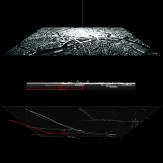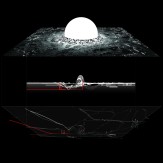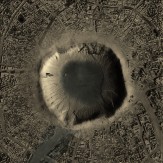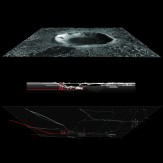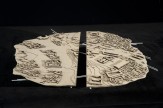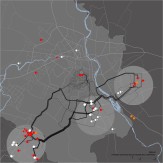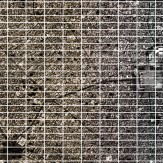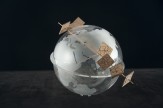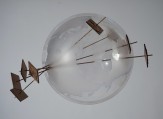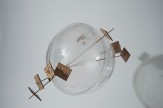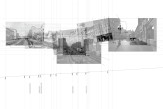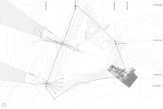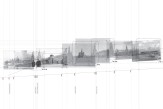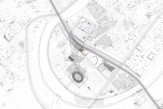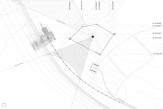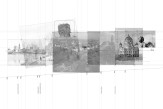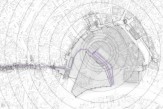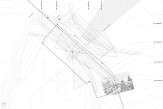Master of Architecture II Fall 2011

End of the Year Exhibition 2012
Incursions into Urban Form and Discourse
Professor: Diana Agrest
Instructor: Daniel Meridor
This studio focuses on the process of generating Urban Form through the exploration of the process by which multiple different forces intersect in generating it. Two cities, Moscow, Russia and New Delhi, India, two cities in accelerated economic growth and expansion, in new conditions, were given as the site of this enquiry, revealing through the readings their own many, not obvious specificities. Emphasis was placed on the design process, initiated through a series of Productive Readings, as the articulation between a creative subject and the various texts of the city.
These Readings were produced on each selected city, through concepts related to an Urbanistic, Technological, or Theoretical/Historical perspective - according to each student’s preferred area of interest in the program and added related narrative concepts. Drawing as a tool for critical thinking and as an intrinsic part of the process was at the heart of this process. Through the drawings produced in the reading process another city was revealed and manifested.
< Back to Selected Graduate Design Studio Projects
VIEW INDIVIDUAL PROJECTS BELOW
Projects
-
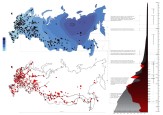
Ghost in the System
-

Potential Catastrophe City
-
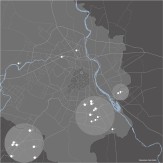
Global Interactions
-
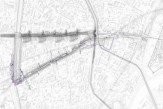
Behind the Image
Back
Ghost in the System
Ghost in the System: Revolution and resistance in Moscow
Lawrence Lek
"A spectre is haunting Europe...”
KARL MARX - THE COMMUNIST MANIFESTO (1848)
Hidden within Moscow is the ghost of conflict between forces of revolution and institutions of control. This project traces these forces as they move through the city, making visible their transformation over two centuries of conflict. Since Napoleon's unsuccessful occupation of the city in 1812, Moscow's transition from Feudalism to Communism has created a city of contrasts, populated by monuments, anti-monuments, institutions, counter-institutions, infrastructure and surveillance systems. Moscow's transport network is dominated by three circular ring roads with main boulevards radiating outwards from Red Square and the Kremlin. Each ring road was the boundary of a former city wall, and the military function of this system is still present, with each ruling government manipulating the fabric to enable the movement of troops through the streets, as well as to prevent Parisian barricades from occurring.
The project focuses on the revolutionary movements in 1900, 1905 and 1917 to illustrate how patterns of revolution interact with the physical fabric of Moscow. The drawings reveal how Enlightenment ideals of reformation and revolution filtered through the city through the literary figures of the time - Pushkin, Dostoevsky and Tolstoy. As the Tsars established the Gulag system to force dissidents into exile, the literary figures were forced to channel their ideas through pamphlets, plays and poems in order to subvert the Tsar's secret police. This media was disseminated into the city through public institutions - the theatre, literary salon, and printers - who maintained their functions even as they were forced to go underground. Tracing the movements of revolutionary figures and oppressive rulers during the 19th and early 20th Centuries shows how both sides manipulated the urban fabric, occupying and appropriating symbolic and strategic institutions and infrastructure to further their own causes.
The experience of traversing the city at war is no longer one of free passage. Public routes are no longer open territory, but are transformed into militarized zones – into spaces of tactical movements, occupied buildings, barricaded squares, suicidal no-go-areas and undetected patrols. At these moments, revolutionary forces on the winding path to the Kremlin are forced to repeat history itself, in an endless cycle of climbing to power and being overthrown.
Potential Catastrophe City
Potential Catastrophe City
Atomic Moscow: 55°45”6’N37°37”4’E50MT1962OCT2712:00EDT
Seongmo Ahn
After the Hiroshima bombing, the shadow of the atomic bomb shrouded the world in fear, feeding suspicion and the polarization of the Cold War era. The fear of nuclear war during the Cold War affected the city physically and mentally, as can be seen in Moscow. The Kremlin powers created the Metro-2 line, which was constructed only for the privileged to evacuate at the moment of nuclear attack. Between the Kremlin, which is the center of the political power, and Metro-2, which lies 200 meters deep, a huge destructive energy has lain dormant during the Cold War era.
The entanglement of fear and power also affected the city’s functioning Metro subway system. Underground stations of the Metro were elaborately located throughout the city fabric, often adjacent / connected to the Metro-2 line, and the depth of the tunnels is beyond compare to other cities. When the role of these infrastructures changed to a potentially duel role as nuclear shelters, many invisible forces began to affect the Metro design. These include nuclear power, the locations of important buildings, political power and discrimination. This project illustrates how the threat of potential catastrophe makes the Metro system play a role as another city under Moscow.
Global Interactions
Global Interactions: Rewriting the Local
Josefina Poroli
Call centers in New Delhi create a complex network of specific places that coexist with and modify the traditional spaces of the city. This seemingly homogenizing activity has particular and paradoxical characteristics: a network of universities, training centers and companies located within the city that are more oriented toward the outside world, creating a constant friction with local traditions.
This project analyzes the provisional relationship between those spaces that reach beyond the city and those that operate on a local level, understanding the interrelationship between global and local.
Behind the Image
Behind the Image
Betty Bluvshtein
Interpretative readings of Moscow are explored through the artifact of a postcard, examining the messages they attempt to convey to an unfamiliar public. The project focuses on the nature of seeing in relationship to postcards, focusing on what one wishes to display and what is marked or hidden. This concept is explored through temporal studies of postcards examining four sites in Moscow – the Red Square, the Kremlin, Arbat Street, and Novodevichy Convent. The final readings of the project display past historical events and transformations through the superficial image of the city as depicted in postcards.

